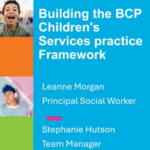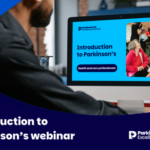
By Elaine Cass
When people choose, or at least appear to be choosing, to cause harm to themselves or put themselves at risk, for example, through self-neglect or remaining in an abusive relationship, it presents a dilemma to social work practitioners. There are aspects of this area of work that lie at the heart of social work, such as relationship-based working, but these type of situations continue to challenge even the most experienced workers.
Personalised approach
The Care Act 2014 requires us to take a personalised approach to adult safeguarding, ensuring that wherever possible the individual at risk of harm remains in control, making their own decisions and judging what is best for them.

To hear more from Elaine Cass on this subject, sign up to Community Care Live where she is running an adult safeguarding dilemmas workshop. Case study material will be used to help participants expand the range of responses available to them when working with complex and challenging situations.
Nevertheless, practitioners continue to have safeguarding responsibilities. They need to work in partnership with other organisations, such as domestic abuse services, and connect with safeguarding forums. On self-neglect, key partners may be housing and environmental health.
Social workers need to know when and how to share information, when to intervene against the will of the individual, and how best to do that. Practitioners must have a good understanding of the Mental Capacity Act 2005 and strong risk management skills. They should be supported by good systems and management in a multi-agency environment; referral routes should be clear; and systems should be in place to enable appropriate information sharing and resolve disputes over responsibilities.
Creative responses
Good social work practice can empower people to consider different options and think about how their life could be better, especially if care is taken not to damage valuable relationships or remove control. Understanding all the options and the relevant law can help practitioners be creative in their responses to very difficult circumstances. Risk enablement is a process and a skill that will support maximum independence of decision making for those at risk, but this must be facilitated through shared responsibility and a multi-disciplinary approach.
Social work practitioners need to have an excellent understanding of all the options to be explored in complex safeguarding cases. They will need to understand the ways in which coercion and duress can influence capacitated decision making and what the legal options are for intervention. Social workers also need to know how independent interventions, such as family group conferences or mediation, can empower people to make their own decisions and use their own resources.
Elaine Cass is practice development manager at the Social Care Institute for Excellence



 Bournemouth, Christchurch and Poole
Bournemouth, Christchurch and Poole  Hampshire County Council
Hampshire County Council  Oxfordshire County Council
Oxfordshire County Council  South Gloucestershire Council
South Gloucestershire Council  Wokingham Borough Council
Wokingham Borough Council  Harnessing social work values to shape your career pathway
Harnessing social work values to shape your career pathway  Webinar: building a practice framework with the influence of practitioner voice
Webinar: building a practice framework with the influence of practitioner voice  ‘They don’t have to retell their story’: building long-lasting relationships with children and young people
‘They don’t have to retell their story’: building long-lasting relationships with children and young people  Podcast: returning to social work after becoming a first-time parent
Podcast: returning to social work after becoming a first-time parent  Workforce Insights – showcasing a selection of the sector’s top recruiters
Workforce Insights – showcasing a selection of the sector’s top recruiters  Free CPD on Parkinson’s for health and social care staff
Free CPD on Parkinson’s for health and social care staff 

 Facebook
Facebook X
X LinkedIn
LinkedIn Instagram
Instagram
More unhelpful flim flam about the ‘personalisation’ agenda. This is the latest craze to sweep adult safeguarding, an area of practice beset by fad and fashion, of buzzwords and jargon. How about this: we only safeguard adults who lack capacity. All adults who have capacity would then have to rely on the protection of this arcane thing called The Law, which does a pretty good (if albeit imperfect) job of protecting everybody else.
1. There is no standard definition of ‘safeguarding’.
2. The Mental Capacity Act is a law specifically designed to safeguard the welfare and protect the rights of incapacitated individuals.
3. Therefore, it is vulnerable, capacitous people who more likely require (and in may cases benefit from) the protection of ‘adult safeguarding’ (whatever that is), up to and including inherent jurisdiction.
How frustrating that victim’s of domestic abuse are used as examples of adults choosing to, or at the very least appearing to choose to put themselves at risk. We need to put a stop to this culture of victim blaming. Stop asking, ‘Why don’t they just leave?’ and start saying, ‘Why doesn’t the abuser stop’? Victims of domestic abuse have enough to contend with, without also having to battle attitudes that view them as responsible for their situations. I certainly hope any workshop will be adequately unpacking the complex dynamics of domestic abuse!
I would like to register myself to attend the workshop please?
Hello
No need to register for the workshop specifically but do sign up to CC Live https://www.communitycare.co.uk/live/ and you’ll be able to come along.
Thanks,
Mithran (Community Care)
in view of changes in society, surely approaching this sensibly would benefit all, with emphasis on stopping the abuse, period!